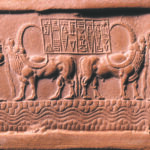Where Was Sumeria Located: Sumeria’s ancient society has a unique and important place in the history of the world. It was one of the first civilizations we know about, and its effects on society, government, and technology can still be felt today. But have you ever been curious about where Sumeria was? In this piece, we’ll take a trip back in time to learn about Sumeria’s interesting geography.
Where Was Sumeria Located
Table of Contents
How to Learn About the Cradle of Civilization
The Place Where Civilization Began
Sumeria, which is often called the “Cradle of Civilization,” was in the south of Mesopotamia, in the “land between the rivers.” This area is now part of the country of Iraq.
Mesopotamia is called “The Land Between the Rivers.”
Mesopotamia gets its name from the Tigris and Euphrates rivers, which used to flow through this rich land in the past. Sumeria was in the most southern part of Mesopotamia. To its south was the Persian Gulf.
What it means for geography
The rivers Tigris and Euphrates
The rivers Tigris and Euphrates gave life to Sumeria. They gave farmers a steady source of water and made it easier to sell and move around. The rich soil along their banks made it possible for agriculture to grow, which was important for keeping the Sumerian society going.
Barriers made by nature
To the west of Sumeria was the huge Arabian Desert, which acted as a natural barrier to keep people from coming in. The Zagros Mountains to the east added a third line of defense.
Cities in Sumer
Sumer’s city-states
Sumeria was not a single, unified kingdom. Instead, it was made up of a number of separate city-states. Uruk, Ur, Lagash, and Nippur were some of the most well-known city-states in Sumeria. Each city-state had its own government and leader.
Ziggurats: The Skyscrapers of the Past
The ziggurat was one of the most well-known buildings in Sumerian towns. These huge pyramids with steps were used as churches and were the center of Sumerian religion. The Ziggurat of Ur is one that has been kept in good shape.
Fall and History
Why Sumer fell apart
Sumeria’s fall was caused by a number of things, such as invasions by nearby people and problems with the environment, such as droughts. In the end, the civilization fell, and other Mesopotamian powers took its place.
The Legacy That Will Last
Sumeria may be a thing of the past, but its influence lives on. The Sumerians are thought to have made a lot of new things, like the first writing system, which was cuneiform and was written on clay tablets. They also made a complicated set of rules and ways to run the government.
In the end
Sumeria, the place where people first started to live together, was in the southern part of Mesopotamia, which is now Iraq. It did well because there were natural hurdles to the west and east. It was between the Tigris and Euphrates rivers. The city-states of Sumeria left a rich history that is still having an effect on our world today.
FAQs
Why is Sumeria an important part of history?
Sumeria is important because it was one of the oldest known civilizations. It made changes to writing, law, and government that are still used today.
How did the area around Sumer affect their culture?
With its fertile river valleys and natural barriers, Sumeria’s geography was very important to the growth and survival of the society.
What is cuneiform and why does it matter?
Sumerians made the first known writing system, called cuneiform. This was a big step forward in how people communicated and kept records.
Why did Sumeria lose power?
Sumeria had problems like invasions and problems with the environment, which led to its final decline.
How can the history of Sumeria still be seen today?
Sumer’s influence can be seen in many parts of modern life, such as our law systems, ways of writing, and ideas about how to run a country.

I’m a student. I like writing about famous people. I will cover biography of all the latest and trending people world wide. Stay tuned with me on Biographyly.com. Don’t forget to share our contents with your friends.




